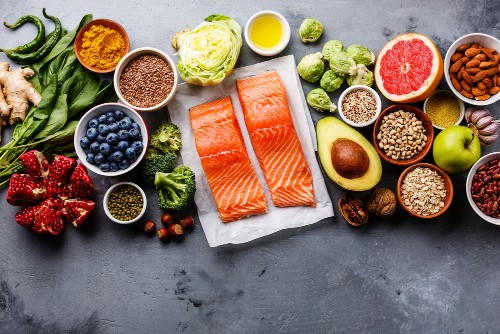By Menachem Lubinsky, CEO of Lubicom
We are often referred to as “People of the Book!” It describes our total allegiance to that book, the Torah. So, are we now the “People of the Click?” How else can you explain that in a recent 12-month period, searches for kosher on Google surged by 13.5%, well beyond other food categories and even other non-food searches.
There was a lot more in the presentation by Yarden Horwitz, a former trendspotting expert at Google and co-founder of SPATE, the artificial intelligence trends prediction for food, beauty, and fashion. Speaking at the opening session of Kosherfest on Tuesday November 13, Ms. Horwitz revealed that Google searches before Pesach are through the roof. But growth by 13.5% between August 2017 and August 2018? Wow!
And that’s not all. We are searching for all the kosher versions of the latest trends. We are into Keto foods which are high protein–low carbohydrate foods that are now available in many categories including snacks and even pizza. There has been a 98% growth in Keto snacks. Kosher consumers appear to be searching for the “superfoods” and “food makeovers.” One makeover category is the fascination with “bowl foods” including ACU, Poke, Playa, Buddha, and even egg rolls.
Says Ms. Horwitz: “More and more consumers are turning to superfoods as a way of dealing with increased anxiety.” Experts define superfoods as popular must-have foods in today’s diet. Some examples include dark leafy greens, berries, green tea and legumes.

So, the news that we use the internet to enhance our kosher way of life is out. It is no wonder that sites like kosher.com are doing so well.
The ability to search for an item and to determine the identity of the certification agency or rabbi is a gamechanger. Most of the kashrus agencies nowadays have apps that allow us to instantly search for a product. I have seen shoppers consult the apps while browsing in a supermarket.
Remember the old days, when you either had to consult with your local rabbi or call a hotline to ask your question, sometimes taking days? It got even more complicated before Pesach when you’re in the kitchen and needed instant answers. “Rabbi Google” to the rescue! In many cases, even if you have a more complicated question on kashrut, you might find the answer with a Google search. At least you might find out which rabbi says what.
Technology is definitely playing a big role in kashrus education, but according to Ms. Horwitz, people from all walks of life are searching for kosher food products, recipes, eateries, caterers, travel and much more. And not just Jews. A non-Jewish acquaintance told me that she searches for kosher Chanukah gifts for colleagues online. The world of kosher has become so vast that it has spilled over to the internet.
A developing facet of the internet is online shopping, which now includes many kosher supermarkets. People are doing entire orders online for delivery to their doorsteps, or doing online orders for pick-up, saving them valuable time negotiating the aisles of the supermarket. To quote one supermarket executive: “The internet has become like another branch of my store without the overhead.”

Ms. Horwitz’s work as a trendspotter is an enormous asset to the kosher food industry. Manufacturers can produce the products that kosher consumers want. Retailers can stock the items that are “hot” and perhaps use merchandising to flag their being up-to-date with products that are “in.”
It can even be beneficial to restaurants and caterers who can plan menus accordingly. Anyone for kosher gnocchi? Had it three times in the last two weeks at simchas.
According to Ms. Horwitz, there is a flip side. Remember when kale was the hottest trend in foods? Apparently, it’s not so hot anymore. This means that trendspotting can equally predict foods that are on the decline and perhaps have trended and are out. It shouldn’t be a surprise that the popularity of foods is also on a cycle, with some lasting longer than others. Nor should it be a surprise that in kosher as well, there are ups and downs.
Finally, what you learn from a trendspotter like Yarden Horwitz is that one size does not fit all. Millennials have brought back many foods that were considered passé. Even herring, which only 20 years ago seemed on the decline, has had a resurgence. Today, herring is a category with many applications that go well beyond the schmaltz.
Or take cholent and kugel that has emerged as kind of “superfood” in kosher that goes well beyond being the traditional hot food on Shabbos. Imagine Googling for the best cholent in a given neighborhood.
You might say that Google has by far replaced word of mouth, which was once the customary way of transmitting information on your favorite kosher food. If Ms. Horwitz has her way, we will be able to predict what new kosher foods you will enjoy and which foods you no longer care for. Wow, that’s progress!





